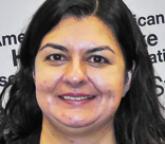Video

Pooja Khatri, MD
Dr. Khatri discusses the evidence for selecting patients for acute endovascular therapy based on stroke severity.

LOS ANGELES—The use of endovascular thrombectomy to treat patients with acute ischemic stroke increased dramatically in the United States in 2015 after several trials documented the clinical benefit of the therapy. Furthermore, stroke centers are refining and reshaping delivery of the treatment in concert with administration of IV t-PA, which remains a key component in producing the best outcomes for patients with a proximal occlusion of a large cerebral artery. In addition, recent findings have emboldened stroke specialists to seriously consider simplifying the brain imaging that stroke patients receive prior to these treatments, a step that could further cut time to intervention, while also making thrombectomy more widely available.
Thrombectomy Use Surges
Researchers at the University of California, San Francisco, documented a surge in the use of thrombectomy in 2015. Using the University HealthSystem Consortium database, the investigators analyzed data on the treatment of 357,973 patients with acute ischemic stroke who were hospitalized at any one of 161 US academic medical centers between October 2009 and July 2015. They tracked the percentage of patients treated endovascularly during each calendar quarter of the study period. They presented their results at the International Stroke Conference 2016.
During 2009 to 2013, use of endovascular treatment rose gradually, from 1.5% of patients with stroke in 2009 to 3.1% during the fourth quarter of 2012. Then, following three reports of no benefit from endovascular treatment that were presented at the International Stroke Conference in February 2013—the IMS III, MR RESCUE, and SYNTHESIS trials—the endovascular rate dropped to 2.6% and remained steady through the third quarter of 2014. But when the positive endovascular results from the MR CLEAN study became public in the final week of 2014, endovascular use began to quickly rise again, and then increased further during the first quarter of 2015, when three additional positive trial results were reported at the stroke conference in February 2015. By the end of the second quarter of 2015, usage stood at 4.7%, representing a projected year-over-year increase of about 150% for all of 2015, compared with 2014, reported Anthony S. Kim, MD, Medical Director of the Stroke Center at the University of California, San Francisco, and his associates.
To put these percentages in perspective, experts estimate that roughly 10% to 15% of all patients with stroke qualify for thrombectomy.
Their data also showed that the percentage of hospitals in the database that performed endovascular therapies for stroke rose steadily from about 40% of centers in 2009 to nearly 60% by mid-2015.
“Endovascular therapy with newer-generation devices is increasingly part of standard treatment for acute ischemic stroke,” the researchers said. In addition, they cited a “new urgency to evaluate regional access to embolectomy nationally and to identify system-based solutions to improve this access in underserved areas.”
Dramatic Change
Several stroke experts added their own anecdotal view of thrombectomy’s rapidly expanding use for appropriate patients with acute ischemic stroke during 2015, and the need for continued effort to broaden its US availability.
“The number of thrombectomies fell off after the negative 2013 trials and stayed flat until a year ago, but then jumped up. It has been very dramatic,” said Wade S. Smith, MD, PhD, Director of Neurovascular Services at the University of California, San Francisco, and one of the authors of the study.
“Thrombectomy use tremendously increased since February 2015,” said Mark J. Alberts, MD, Professor of Neurology and Neurotherapeutics and Medical Director of the neurology service at the University of Texas Southwestern Medical Center in Dallas. Despite this growth, “the major challenge [today] is geography”—reaching patients in suburban and rural areas who are not as close to the primarily urban medical centers that offer the procedure.
“We now have about 100 certified comprehensive stroke centers in the US,” and by definition, comprehensive stroke centers have the capability of treating patients with endovascular thrombectomy, noted Jeffrey Saver, MD, Professor of Neurology and Director of the Stroke Unit at the University of California, Los Angeles.
“Certification of these centers did not begin until about two to three years ago. But we probably need 300 to 400 of these centers” to provide thrombectomy to most US stroke patients, he said. “A lot of additional hospitals are close to certification. I anticipate that over the next one to two years we will be in the neighborhood of having the number of centers we need,” Dr. Saver said.
An Evolving Approach
In addition to expanding availability, the delivery of endovascular thrombectomy is evolving. A major trend is movement toward a parallel processing model in which patients with an acute clinical presentation of a stroke eligible for endovascular treatment simultaneously undergo CT angiography to confirm and localize the large-artery clot causing their stroke, receive IV t-PA, and undergo preparation for the endovascular access needed to remove the clot.

Dr. Khatri discusses the evidence for selecting patients for acute endovascular therapy based on stroke severity.
